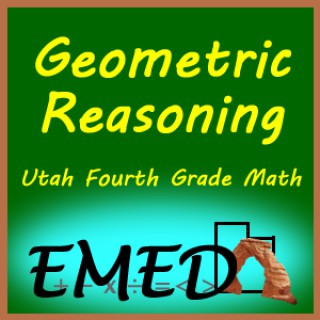
Number Sense
Follow Number SenseThis is a feed of pages for Number Sense
- May 17, 2011 LATEST EPISODE
- infrequent NEW EPISODES
- 20 EPISODES
More podcasts from EMED
Latest episodes from Number Sense

b. Select appropriate methods to solve a single operation problem and estimate computational results or calculate them directly, depending on the context and numbers involved in a problem.

b. Order whole numbers up to six digits, simple fractions, and decimals using a variety of methods (e.g., number line, fraction pieces) and use the symbols , and = to record the relationships.

b. Demonstrate multiple ways to represent whole numbers and decimals by using models and symbolic representations (e.g., 36 is the same as the square of six, three dozen, or 9 x 4).

d. Solve problems involving simple fractions and interpret the meaning of the solution (e.g., A pie has been divided into six pieces and one piece is already gone. How much of the whole pie is there when Mary comes in? If Mary takes two pieces, how much of the whole pie has she taken? How much of the pie is left?)

b. Multiply up to a three- digit factor by a two-digit factor with fluency, using efficient procedures.

b. Multiply up to a three- digit factor by a two-digit factor with fluency, using efficient procedures.

d. Solve problems involving simple fractions and interpret the meaning of the solution (e.g., A pie has been divided into six pieces and one piece is already gone. How much of the whole pie is there when Mary comes in? If Mary takes two pieces, how much of the whole pie has she taken? How much of the pie is left?)

d. Represent division of a three-digit dividend by a one-digit divisor, including whole number remainders, using a variety of methods (e.g., rectangular arrays, manipulatives, pictures), and connect the representation to an algorithm.

b. Order whole numbers up to six digits, simple fractions, and decimals using a variety of methods (e.g., number line, fraction pieces) and use the symbols , and = to record the relationships.

d. Identify equivalences between fractions and decimals by connecting models to symbols.

e. Name and write a fraction to represent a portion of a unit whole, length, or set for halves, thirds, fourths, fifths, sixths, eighths, and tenths.

e. Use models to add and subtract simple fractions where one single-digit denominator is 1, 2, or 3 times the other (e.g., 2/4 + 1/4; 3/4 - 1/8).

c. Divide up to a three-digit dividend by a one-digit divisor with fluency, using efficient procedures.

d. Add and subtract decimals and simple fractions where one single-digit denominator is 1, 2, or 3 times the other (e.g., 2/4 + 1/4 = 3/4; 1/3 – 1/6 = 1/6).

c. Divide up to a three-digit dividend by a one-digit divisor with fluency, using efficient procedures.

a. Compare the relative size of numbers (e.g., 475 is comparable to 500; 475 is small compared to 10,000 but large compared to 98).

Order whole numbers up to six digits, simple fractions, and decimals using a variety of methods (e.g., number line, fraction pieces) and use the symbols , and = to record the relationships.

b. Use rectangular arrays to interpret factoring (e.g., find all rectangular arrays of 36 tiles and relate the dimensions of the arrays to factors of 36).

Order whole numbers up to six digits, simple fractions, and decimals using a variety of methods (e.g., number line, fraction pieces) and use the symbols , and = to record the relationships.

c. Identify the place and the value of a given digit in a six-digit numeral, including decimals to hundredths, and round to the nearest tenth.












